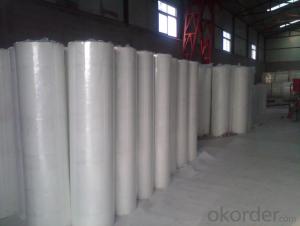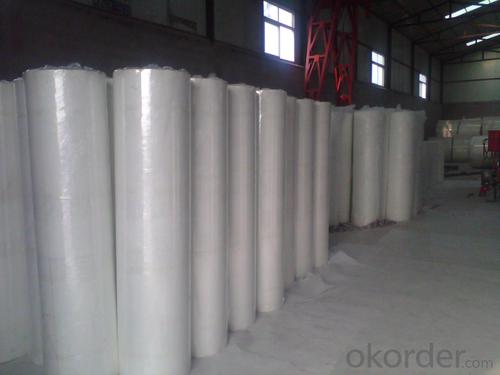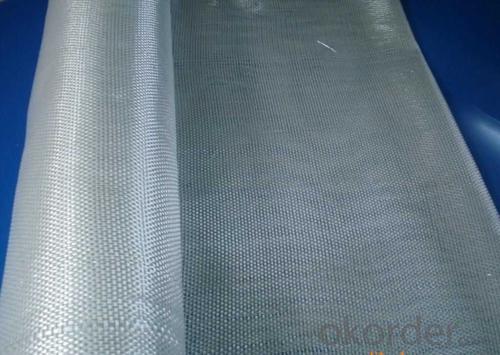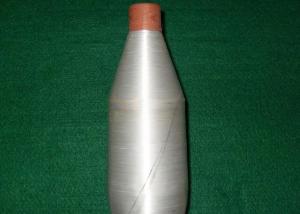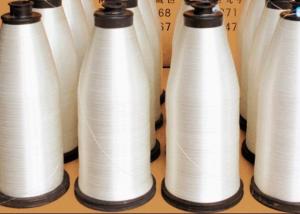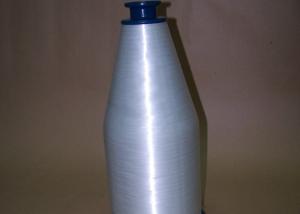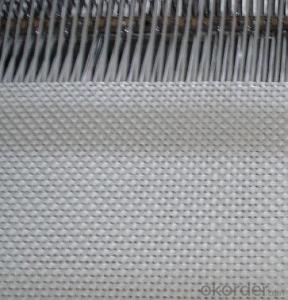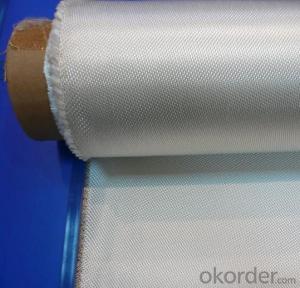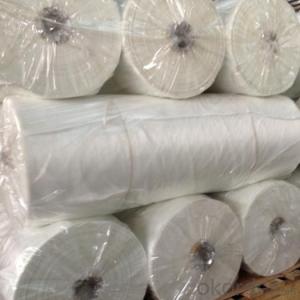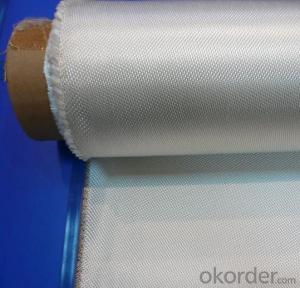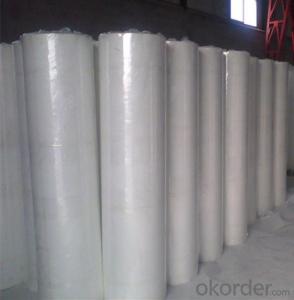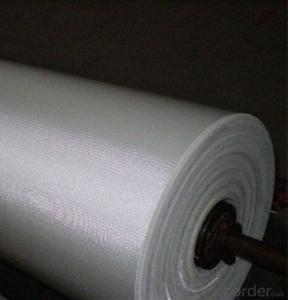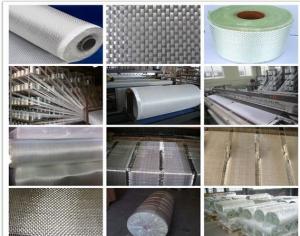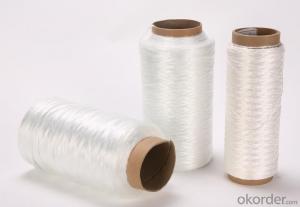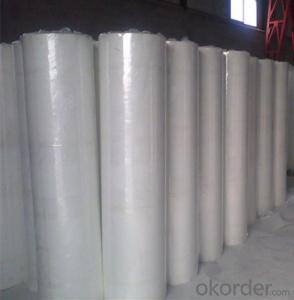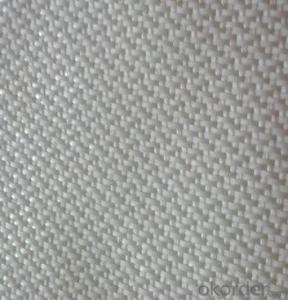Fiberglass Yarn Reinforced Fiberglass Fabric for Pipeline Ductile Conjunction
- Loading Port:
- Shanghai
- Payment Terms:
- TT OR LC
- Min Order Qty:
- 500 m²
- Supply Capability:
- 50000 m²/month
OKorder Service Pledge
OKorder Financial Service
You Might Also Like
Fiberglass Fabric for Pipeline Ductile Conjunction
Fiberglass Fabric Introduction:
Fiberglass fabric is weaved by high quality fiberglass,as a kind of engineering material,which is
many excellent characteristics:
flame-resisting,corrosion resistant,high strength,heat resistance.stable structure,good chemical resistance,durability.
Fiberglass Fabric Features:
Warp and weft yarns are parallel arrangement as flat situation, with uniform tension;
Fiber is aligned with large consistency, stable and easy operation;
Good moldability, fast and complete wet out in resins, resulting in high productivity;
Good transparency and high strength of composite products.
Fiberglass Fabric Specification:
mark | Fiber consistency(ends/ cm) |
Area weight (g/ m2) |
Thick-ness (mm) |
Width (cm) |
Length (mm) | Breaking strength(N)≥ |
weave | |||
Warp direction | Weft direction | Warp direction | Weft direction | |||||||
EW200 | 16 | 12 | 200±20 | 0.2 | 90-130 | 300-1200 | 980 | 980 | ||
EW210 | 16 | 12 | 200±20 | 0.21 | 90-130 | 300-1200 | 1080 | 1080 | Twill weave | |
Plain weave | ||||||||||
EWR360 | 3.2 | 1.8 | 354±18 | 0.35 | 50-300 | 100 | 2000 | 2000 | ||
EW280 | 16 | 10 | 280±28 | 0.26 | 90-130 | 300-1200 | 1800 | 1800 | ||
EW300 | 14 | 10 | 320±32 | 0.3 | 90-130 | 300-1200 | 1500 | 1500 | ||
EW430 | 20 | 12 | 420±42 | 0.43 | 90-130 | 300-1200 | 2000 | 2000 | Broken twill | |
EWR136 | 10 | 10 | 136±13 | 0.136 | 100 | 200 | 850 | 850 |
Plain weave | |
EWR200 | 8 | 7 | 200±20 | 0.21 | 100 | 200 | 1200 | 1200 | ||
EWR400 | 3.6 | 3.2 | 400±30 | 0.4 | 100 | 50-100 | 2500 | 2500 | ||
EWR600 | 2.6 | 2.5 | 600±50 | 0.6 | 100 | 40KG | 4000 | 4000 | ||
EWR580 | 2.5 | 2.3 | 576±29 | 0.58 | 100 | 40KG | 3850 | 3850 | ||
EWR800 | 1.8 | 1.8 | 800±60 | 0.8 | 100 | 40KG | 4600 | 4600 | ||
Product Show
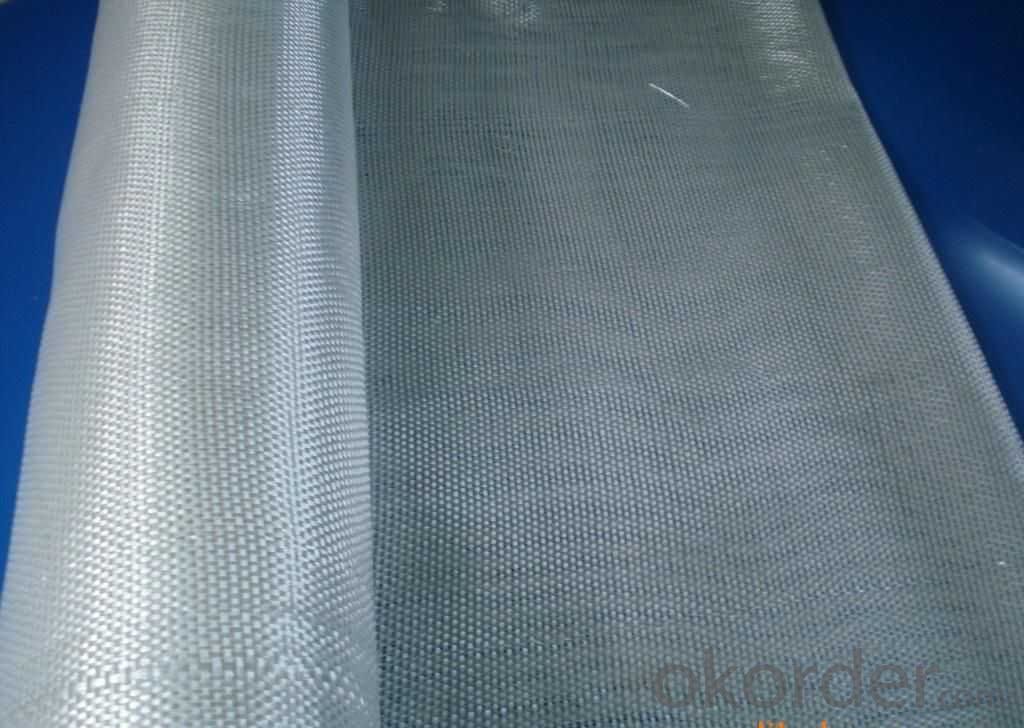
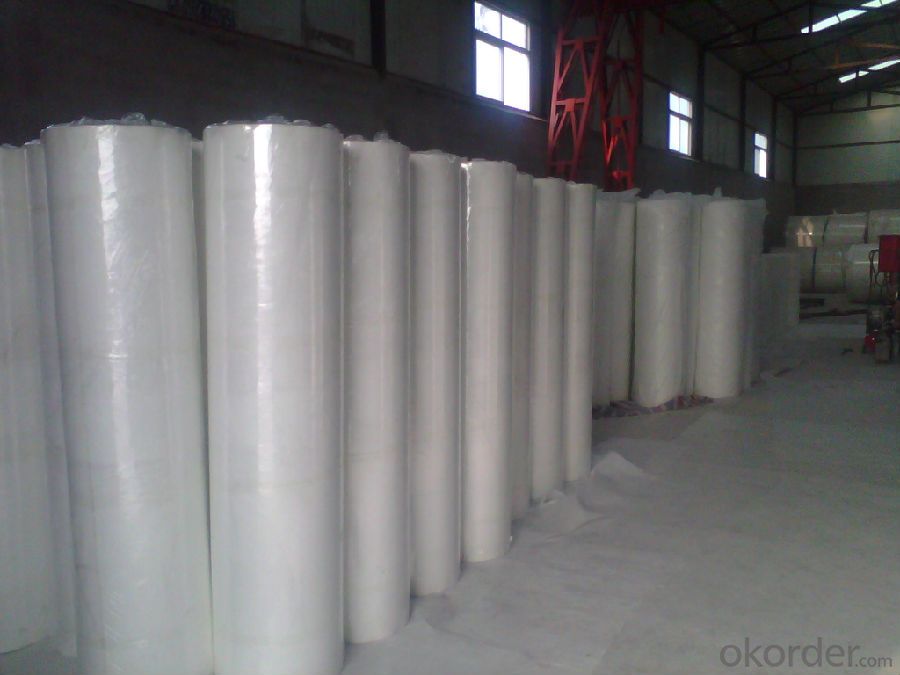
Fiberglass Fabric Usage:
E-glass woven roving is a schistose double faces reinforcement fabric that is weaved into from roving in directly.
E-glass fiber fabric (thin fabrics with thickness from 0.025 to 0.09mm) is suitable for electrical isolation mica product, wax cloth as the reinforcement materials.
E-glass woven roving applys to all kinds of polyester reinforcement system, (such as unsaturated polyester resin, vinylite,epoxy resin and phenolic resin.
E-glass woven roving is a high performance reinforcement material. It is widely used in hand lay-up and machinery processing products, (such as vessel, container, airplane and vehicle component, furniture, athletic facilities and other industry.
FAQ
1.Package of Fiberglass Fabric?
Fiberglass fabric is wound on a paper tube with inner diameters of 50. 8, 76 or 152mm. Each roll is wrapped in a plastic bag, then to be packed in a carton box. The rolls are to be horizontally placed.
Width (cm): 90, 100, 127
Length (m): 100, 200, 300, 400
2.Storage of Fiberglass Fabric?
Store rolls in a cool, dry location
Protect rolls from weather and other damage.
3.If sample available if needed?
We aim to offer our customer best Products&Service,samples are allowed if necessary.
- Q: Is fiberglass yarn resistant to oils and greases?
- Yes, fiberglass yarn is generally resistant to oils and greases due to its non-reactive nature and low absorption properties.
- Q: Can fiberglass yarn be used in construction applications?
- Yes, fiberglass yarn can be used in construction applications. Fiberglass yarn is a strong and durable material that is resistant to corrosion, chemicals, and extreme temperatures. It is commonly used in construction for reinforcing concrete and other building materials. Fiberglass yarn can be woven into fabrics or mats, which can then be used to reinforce walls, floors, roofs, and other structural elements. It provides strength and stability to the construction, making it more resistant to cracks, fractures, and other damage. Additionally, fiberglass yarn is lightweight and easy to handle, making it a convenient choice for construction projects. Overall, fiberglass yarn is a versatile material that can significantly enhance the strength and durability of construction applications.
- Q: What are the different deniers available for fiberglass yarn?
- Fiberglass yarn offers a range of deniers, which indicate the thickness or fineness of the individual fibers within the yarn. Options for deniers include 300D, 600D, and 1200D. The denier of fiberglass yarn is determined by weighing 9000 meters of the yarn in grams. Lower deniers, like 300D, represent a finer and lighter yarn, while higher deniers, such as 1200D, imply a thicker and heavier yarn. When deciding on the denier for fiberglass yarn, it is important to consider the specific application and desired properties. Finer deniers are suitable for applications that require flexibility, softness, and a smoother appearance. Conversely, higher deniers are preferred for applications that necessitate strength, durability, and resistance to abrasion. Additionally, it is noteworthy that the denier of fiberglass yarn can impact other characteristics such as tensile strength, heat resistance, and electrical conductivity. Therefore, selecting the appropriate denier for fiberglass yarn requires careful consideration of the specific requirements of its intended use to ensure optimal performance.
- Q: Can fiberglass yarn be used in the production of belts and straps?
- Fiberglass yarn is a versatile material that finds application in the production of belts and straps. Its strength and durability have made it a popular choice for manufacturing products that need high tensile strength and resistance to wear and tear. Belts and straps made with fiberglass yarn are widely used in industries like automotive, aerospace, and heavy machinery, where reliability and longevity are of utmost importance. The flexibility and lightness of the fabric woven or braided with fiberglass yarn make it suitable for applications requiring high load-bearing capacity. Moreover, this material exhibits excellent resistance to heat, chemicals, and UV radiation, further enhancing its suitability for belt and strap production.
- Q: Can fiberglass yarn be used in filtration applications?
- Yes, fiberglass yarn can be used in filtration applications. Fiberglass yarn is known for its high strength, durability, and resistance to chemicals, making it an ideal choice for various filtration processes. It is commonly used in applications such as air filters, liquid filtration, dust collection, and oil filtration. The fine fibers of fiberglass yarn can effectively capture and trap particles, contaminants, and impurities, ensuring a clean and purified output. Additionally, fiberglass yarn is resistant to high temperatures, making it suitable for filtration processes that involve hot fluids or gases. Its versatility and excellent filtration properties make fiberglass yarn a reliable and popular choice for a wide range of filtration applications.
- Q: Can fiberglass yarn be used for making rugs?
- Yes, fiberglass yarn can be used for making rugs.
- Q: Is fiberglass yarn resistant to electricity?
- Yes, fiberglass yarn is resistant to electricity. Fiberglass is an excellent insulator and does not conduct electricity. It is commonly used in electrical applications where insulation is required, such as in the manufacturing of electrical cables, wiring, and circuit boards. The non-conductive properties of fiberglass yarn help to prevent electrical current from flowing through the material, reducing the risk of electrical shock or short circuits. Additionally, fiberglass yarn is also resistant to heat and chemicals, making it a versatile and durable material for various electrical and industrial applications.
- Q: What industries commonly use fiberglass yarn?
- Some industries that commonly use fiberglass yarn include automotive, aerospace, construction, marine, and electrical.
- Q: How does the surface energy of fiberglass yarn impact its bonding to other materials?
- The bonding capability of fiberglass yarn with other materials is greatly influenced by its surface energy. Surface energy refers to the energy needed to increase the surface area of a material and is dependent on the molecular structure and composition of the material's surface. For fiberglass yarn, a higher surface energy enhances its ability to bond with other materials. This is because materials with high surface energy have a strong attraction to other materials, allowing for better adhesion. In cases where the surface energy of fiberglass yarn is high, it forms stronger bonds with other materials, resulting in improved overall bonding strength. Conversely, if the surface energy of fiberglass yarn is low, its affinity for other materials is weaker, leading to poor bonding. In such instances, the bonding between the fiberglass yarn and other materials may be weak, resulting in reduced adhesion and potential delamination. To optimize the bonding between fiberglass yarn and other materials, it is crucial to consider surface energy compatibility. Matching the surface energy of the fiberglass yarn with that of the other material being bonded can significantly enhance adhesion and overall bonding strength. This can be achieved by altering the surface energy of either the fiberglass yarn or the other material through various surface treatment techniques, such as corona treatment, plasma treatment, or chemical modification. In conclusion, the surface energy of fiberglass yarn has a direct impact on its bonding capability with other materials. Higher surface energy promotes stronger bonding, while lower surface energy may lead to weaker adhesion. By understanding and manipulating surface energy, one can optimize the bonding of fiberglass yarn with other materials, ensuring enhanced adhesion and improved overall performance.
- Q: Is fiberglass yarn resistant to pilling or fuzzing?
- Yes, fiberglass yarn is highly resistant to pilling or fuzzing. Unlike natural fibers such as cotton or wool, fiberglass yarn is made from synthetic materials that are extremely durable and do not easily break or fray. This makes it highly resistant to the formation of pills or fuzz on the surface of the yarn. Additionally, the smooth and sleek nature of fiberglass yarn further prevents the accumulation of loose fibers or lint. As a result, fiberglass yarn maintains its original appearance and texture for a longer period of time, making it an excellent choice for products that require high resistance to pilling or fuzzing, such as upholstery fabrics, outdoor textiles, or industrial applications.
Send your message to us
Fiberglass Yarn Reinforced Fiberglass Fabric for Pipeline Ductile Conjunction
- Loading Port:
- Shanghai
- Payment Terms:
- TT OR LC
- Min Order Qty:
- 500 m²
- Supply Capability:
- 50000 m²/month
OKorder Service Pledge
OKorder Financial Service
Similar products
Hot products
Hot Searches
